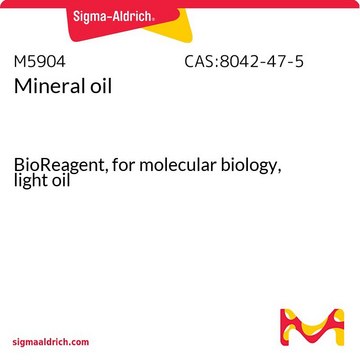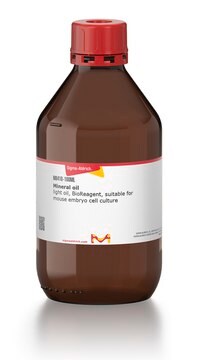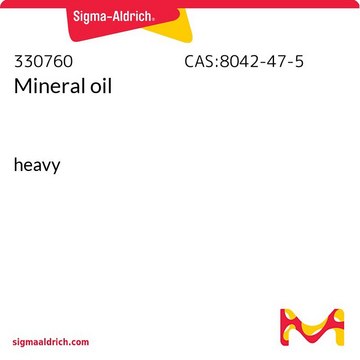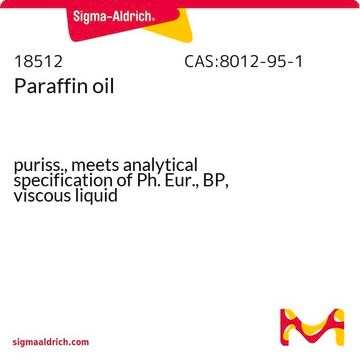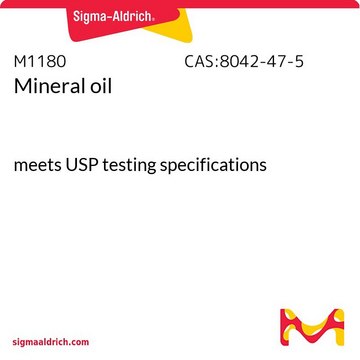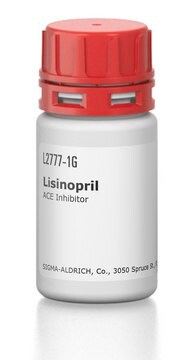M8662
Óleo mineral
PCR Reagent
Sinônimo(s):
Mineral oil for PCR
About This Item
Produtos recomendados
grau
PCR Reagent
Nível de qualidade
forma
liquid
embalagem
vial of 1.5 mL (Total volume 7.5 mL (5 vials))
técnica(s)
PCR: suitable
cor
colorless
índice de refração
n20/D 1.467 (lit.)
densidade
0.84 g/mL at 25 °C (lit.)
atividade externa
DNase, RNase, protease, none detected
temperatura de armazenamento
room temp
chave InChI
AEOVEGJBKQQFOP-DDVLFWKVSA-L
Procurando produtos similares? Visita Guia de comparação de produtos
Descrição geral
Aplicação
- for routine PCR amplifications
- to improve the heat conductivity between the device and the cycler during reverse transcription-polymerase chain reaction (RT–PCR) amplification
- to prevent evaporation during single-cell MATQ-sequencing performed on Bravo automated liquid handling platform
Características e benefícios
- Provided in a convenient 5 × 1.5 mL (1 vial) pack size
- Tested for the absence of DNase, RNase, and protease.
Código de classe de armazenamento
10 - Combustible liquids
Classe de risco de água (WGK)
WGK 1
Ponto de fulgor (°F)
No data available
Ponto de fulgor (°C)
No data available
Equipamento de proteção individual
Eyeshields, Gloves
Certificados de análise (COA)
Busque Certificados de análise (COA) digitando o Número do Lote do produto. Os números de lote e remessa podem ser encontrados no rótulo de um produto após a palavra “Lot” ou “Batch”.
Já possui este produto?
Encontre a documentação dos produtos que você adquiriu recentemente na biblioteca de documentos.
Os clientes também visualizaram
Protocolos
Method for bacterial genome analysis and detection of pathogens. Minimize false positive PCRs through lab design and reagents tested for use in bacterial PCR applications.
Protocol using antibody mediated hot start polymerase. Method has short activation period (<1min), and results in higher yields and more specificity over standard PCR methods.
Protocol using antibody mediated hot start polymerase with a red dye for easy gel loading. Method has short activation period (<1min), and results in higher yields and more specificity over standard PCR methods.
Hot Start Taq Polymerase protocol to reduce non-specific amplification, with MgCl2 Optimization
Nossa equipe de cientistas tem experiência em todas as áreas de pesquisa, incluindo Life Sciences, ciência de materiais, síntese química, cromatografia, química analítica e muitas outras.
Entre em contato com a assistência técnica